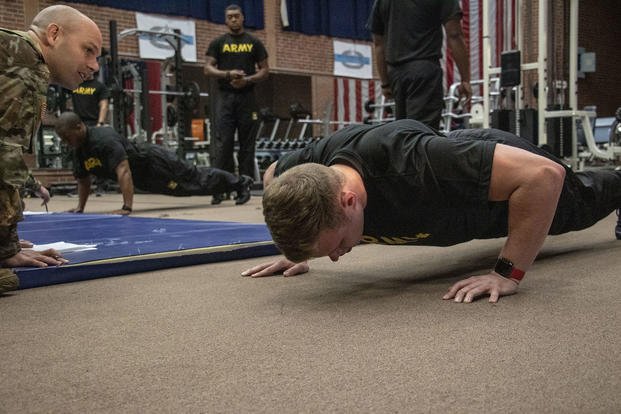After an injury, getting back to normal can take some time. It is a process that has to follow these steps:
- Injury
- Reduce swelling
- Healing
- Regain full range of motion
- Rebuilding
- Back to normal
This process can take a few weeks to more than a year, depending upon the injury's severity and whether surgery is required. Here is a question concerning getting back to 100% after a fractured collarbone:
Stew,
A few years ago, I was involved in a motorcycle accident and consequently broke my collarbone. Initial recovery went fine, but over time, it seems as if scar tissue and other inflammatory symptoms have hampered my ability to perform correct push-ups. I went from being able to get an excellent on my PFT to being around 10 points shy.
Sometimes I can hit the minimum number, and sometimes I have to stop due to pain. It's kind of beat me mentally on trying to push through the other aspects of my fitness routine. The docs around here have just sent me to physical therapy, and that has helped very little. Is there anything I can do to get back on track? I want to get back to knocking out my PFTs with little anxiety and no waivers.
Paul,
Several major torso, joint and a few neck muscles attach to the clavicle, including the big three of the upper body: pectoralis major, trapezius and deltoid. So the collarbone is a hub to many movements of the shoulder and neck. Any movement during the recovery stage of a clavicle injury very often leads to a dull or sharp pain. You can always assume some amount of soft-tissue injury when the collarbone is broken because of its connection to muscles and ligaments. Rebuilding these muscles after prolonged movement restriction takes time, physical therapy and possibly even deep-tissue massage to break up any scar tissue caused during the trauma of the injury.
Things to Consider Trying
I would consider soft-tissue massage and/or foam rolling of the muscles. Perhaps get your physical therapist to show you how to roll those muscles out. You should be able to break up some of that scar tissue, if it is there, using these methods. After warming up the joints and muscles, get in a good, full range-of-motion stretch as well.
This is one of the best foam-roller collections of upper torso elements in one video – do them all.
Elbow/Shoulder Placement for Push-ups
When you get in the down position of the push-up, make sure your elbows and shoulders produce a 45-degree angle with your torso. Having high elbows could be an issue if you're closer to 90 degrees. However, you do not want your elbows to touch your ribs while in this push-up position. Imagine your triceps and shoulders forming an arrow shape, instead of a capital T, while in the down position.
Hand Placement
You should have your fingers pointing at the 11 (left) and 1 (right) o'clock positions instead of both pointing at the 12 o'clock position.
Forearm Location
Keep your forearm vertical in the movement of the push-up. Look in a mirror to see whether your forearm stays vertical during the entire movement of the push-up.
See how playing with these positions helps your performance. Work a full range of motion when stretching and try massage, the foam roller and ice when post-workout pain occurs to reduce any inflammation during this rebuilding phase.
Stew Smith is a former Navy SEAL and fitness author certified as a Strength and Conditioning Specialist (CSCS) with the National Strength and Conditioning Association. Visit his Fitness eBook store if you're looking to start a workout program to create a healthy lifestyle. Send your fitness questions to stew@stewsmith.com.
Want to Learn More About Military Life?
Whether you're thinking of joining the military, looking for fitness and basic training tips, or keeping up with military life and benefits, Military.com has you covered. Subscribe to Military.com to have military news, updates and resources delivered directly to your inbox.
Don't Miss a Single Military.com Story
To read the full article and get exclusive benefits, sign up today.
It’s FREE
Why am I seeing this? Visit our FAQs



















